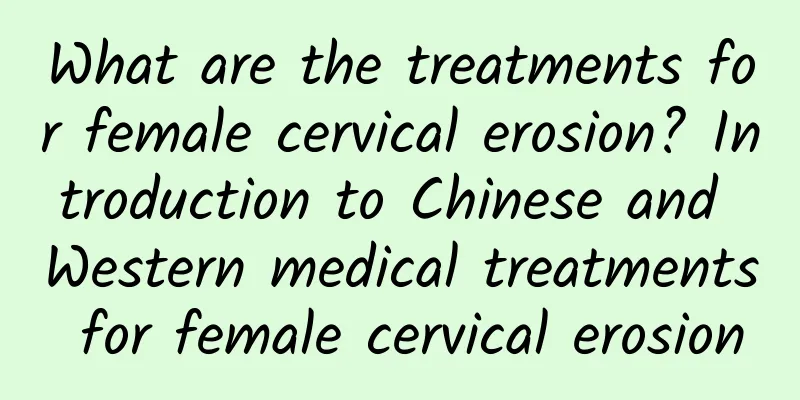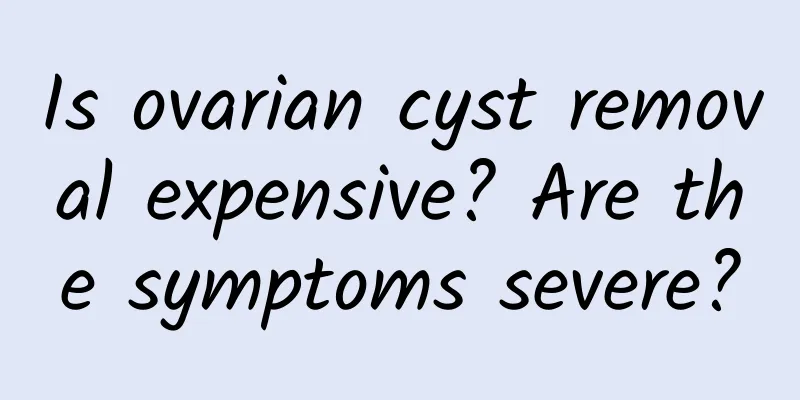The difference between pelvic inflammatory disease and adnexitis

|
The difference between pelvic inflammatory disease and adnexitis: Pelvic inflammatory disease and adnexitis are harmful to women. They are very different. Pelvic inflammatory disease refers to abnormalities, inflammation, persistent pain, and increased secretions in the connective tissue around the reproductive organs or uterus. The main manifestations of adnexitis are increased vaginal discharge, backache, menstrual disorders, etc. Because the symptoms are different, the examination and treatment are also different, mainly depending on the specific situation. 1. Different meanings Women don't know about adnexitis and pelvic inflammatory disease, mainly because they don't know the meaning of the disease. In fact, adnexitis mainly refers to certain inflammations in the female fallopian tubes or ovaries, and adnexitis is also a type of pelvic inflammatory disease. Pelvic inflammatory disease mainly refers to inflammation of the female pelvic reproductive organs or the connective tissue around the uterus, which leads to disease. 2. Symptoms are similar but also different The symptoms of adnexitis and pelvic inflammatory disease are similar to each other, but not completely. If you analyze them carefully, there are still some differences. After the onset of pelvic inflammatory disease, patients will experience persistent pain in the lower abdomen, a significant increase in vaginal discharge, and pain and fever after sexual intercourse. After the onset of the disease, adnexitis is mainly manifested by increased leucorrhea, back pain, and menstrual disorders. 3. Different inspection methods Due to different causes, specific examinations are also different. Generally speaking, when examining adnexitis, diagnosis can be made through B-ultrasound and the patient's surface symptoms. However, the examination of pelvic inflammatory disease can be performed through direct smear of secretions, pathogen culture or laparoscopy. 4. Different treatments The causes and symptoms of pelvic inflammatory disease and adnexitis are very different, so the specific treatment methods will also be different, one is drug treatment and the other is surgical treatment. Patients can receive treatment under the guidance of a doctor. |
<<: How to cure uterine fibroids
>>: Uterine fibroids usually shrink after menopause. How big a uterine fibroid should be removed?
Recommend
Will uterine myoma lead to masculinization after hysterectomy?
For patients with uterine fibroids whose symptoms...
Is polycystic ovary polycystic?
Ovarian polycystic changes are not equivalent to ...
Key points for diagnosis of hyperprolactinemia
Breast examination is extremely important for pat...
Norika Fujiwara loses weight by looking at the moon? Good card for menstrual weight loss
There are all kinds of weight loss tricks! Japane...
What to do if the endometrium is 0.6cm and menstruation does not come
The absence of menstruation when the endometrium ...
Where is there a hospital that specializes in treating uterine effusion?
In fact, many female friends are familiar with th...
Briefly talk about the common causes of dysmenorrhea
Dysmenorrhea is a disease that is very detrimenta...
Women should take good care of pelvic inflammatory disease
If pelvic inflammatory disease is not treated in ...
Male god Wu Yinong showed off his crotch throw, and fans were super excited! Rehabilitation physician: Master these techniques to prevent knee and spinal injuries
Wu Yinong, a candidate for the Legislative Yuan a...
What are the effects of uterine fibroids on the left side of the wall? Does uterine fibroids on the left side of the wall affect pregnancy?
What are the effects of uterine fibroids on the l...
Eat only protein to lose weight? Don't make these 8 wrong habits
Female celebrities will do anything to lose weigh...
What medicine is better for uterine fibroids? How to use medicine for uterine fibroids
Recently, the number of patients with uterine fib...
Key points for distinguishing vulvar leukoplakia from perineal vitiligo
There is a certain degree of similarity in the cl...
What harm does cervicitis do to the human body?
Cervicitis is one of the common gynecological dis...
What to eat during menstruation to replenish blood? It is recommended to eat more of these four types of food
Female friends usually experience nutritional los...









